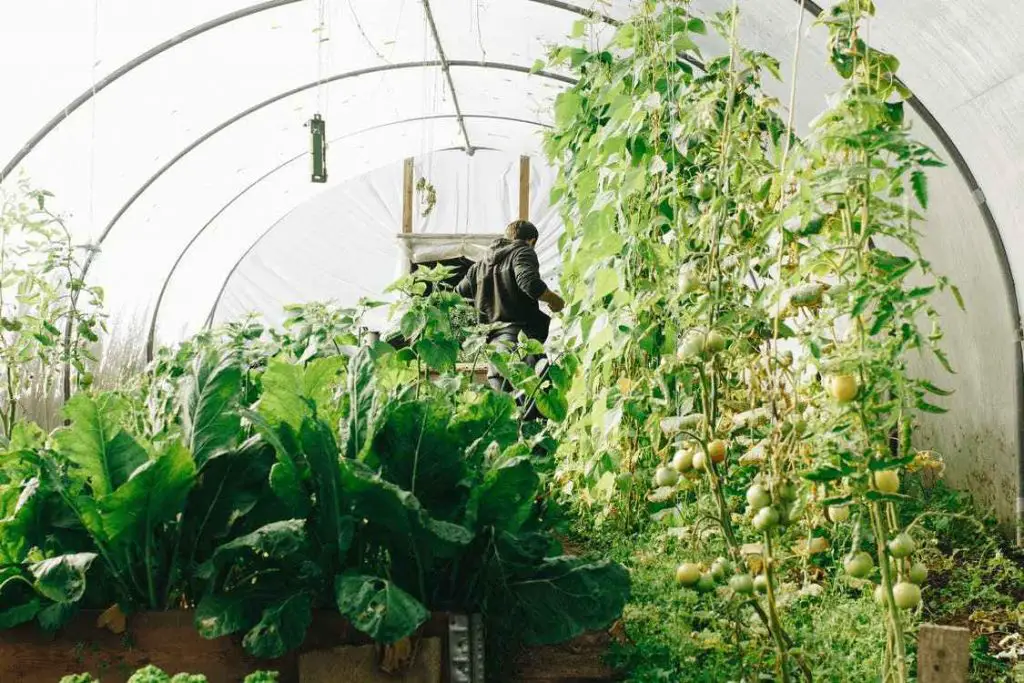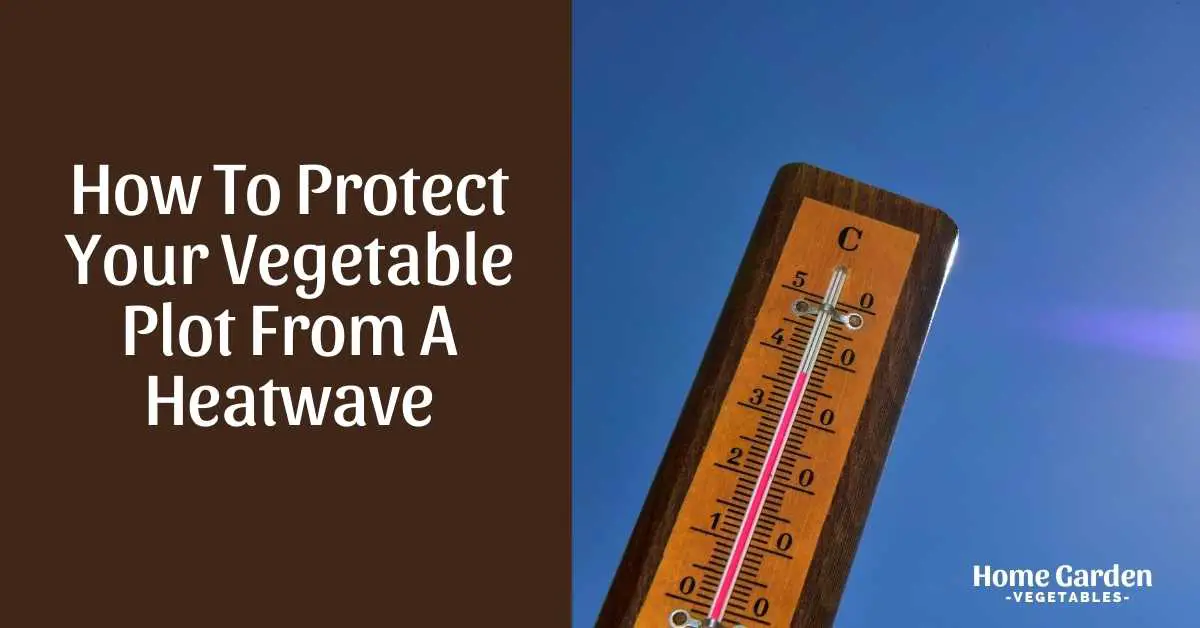Heatwaves in the summer months often take vegetable gardeners by surprise. Most summer vegetables are planned such that they are harvested completely before the searing temperatures appear. Even the heat-loving vegetables, like tomatoes, can be stressed if the temperatures shoot too high.
Extended high-heat periods, especially in July and August, are a major concern for many gardeners. If you’re experiencing a similar situation, don’t let the heat get the best of your vegetables. There are some simple measures that you can take to protect the plants through the hot days and keep the plot growing.
Reader Poll: What online courses would interest you?

When Do Vegetables Need Protection?
Most heat-loving vegetables will need protection as the temperature rises beyond 95°F, while the cold-season vegetables need extra care beyond 80°F. If vegetables are left to grow in the heat beyond these levels, the growth and fruit production will come to a halt.
Beyond 100°F, the plants start showing signs of heat stress, and if the temperatures persistently stay above 110°F, many of them will die.
Signs of heat-stress
- Wilting of new leaves
- Blossom drop
- Fruit drop
- Leaf drop
- Sunburned foliage (yellow and dry patches)
How To Protect Your Vegetable Plot

Even if the temperatures rise beyond what your vegetables can tolerate, you can take a bunch of measures to prevent your plants from heat stress:
Subscribe to our newsletter!
Water Regularly And Deeply
The most basic and effective solution is to maintain an ample water supply to the plot. The heat will dry out the soil quickly, making your plants thirsty more often than usual. If there has been no rain, water your vegetable crop before the temperatures rise. Moist soil will not absorb as much heat as dry soil and stay a bit cooler.
Also, water deeply and thoroughly. With deep watering, moisture will soak deeper into the soil, cooling down many inches below the surface. Also, it helps the roots grow stronger and deeper. Shallow watering keeps the roots growing near the surface, where they’re more vulnerable to a heatwave and very likely to dry out if the high temperatures persist for a couple of days.

Mulch
Mulching the vegetable plot with organic material can prevent the soil from drying out and slightly lowers soil temperatures. Apply 3 inches of mulch to the soil surface to make an effective barrier between the heat and the ground.
Since mulch reduces evaporation from the soil, the soil holds moisture for longer, reducing the need for frequent watering on hot summer days. Different types of materials are available for mulching the land, but it’s best to choose a light-colored mulch during a heatwave since it reflects sunlight, keeping the soil surface cooler.
Straw, printed cardboard, dry grass clippings or other organic material are some popular choices. Don’t use black mulch plastic as it will work oppositely – it absorbs heat and holds it in the soil, practically “cooking” your vegetable plot!

Shade The Plants
Shade cloths are readily available at garden centers for temporary protection of the plants during a heatwave. They come with different protection levels, labeled by the “shade factor.” It tells the degree of sunlight blocked for the plants shaded by it and can range from 15%, 25%, 30%, all the way to 90%. Heat-sensitive vegetables like salad greens will do best with a 50% shade factor, while heat-tolerant varieties such as tomatoes and beans will be happy with a 30% shade cloth.
If you want to avoid a trip to the garden center, or save some bucks, old net curtains, or white bed sheets also make great shade cloths. Just make sure you don’t use dark-colored fabric since they’ll absorb heat rather than reflecting it.
Install hoops or frames and drape the cloth over it, securing it with clothespins at intervals. Be careful not to cover the plants on all sides, since we don’t want to block the air circulation. Usually, coverage at the top and a couple of inches on the sides is enough for the job. Leave 2 to 3 feet open on the sides for air to move in and out freely. However, make sure that the frame and cloth are angled such that it offers shade from the mid-day sun and the setting sun.

Give Fertilization A Break
As the high temperatures take the toll on your vegetable plot, plants exhibit some natural responses to deal with the change. Curling of leaves, dropping of flowers and fruits, and ceased production of new blossoms and fruits are all part of this response.
It may appear that fertilizing the crops may be the answer to this situation, but in reality, it will only make things worse. The sudden overflow of nutrients will signal the plants that it’s time to produce flowers and fruits, which will result in even greater stress for the plants during the soaring temperatures. Also, the plants will need a greater supply of water to process and utilize the additional fertilizer dose.
While your vegetable crop should be planted in an organically-rich soil, to begin with, and kept well-nourished throughout the growing season with regular fertilization, don’t use fertilizers during a heatwave. Instead, focus on regular watering since that’s what will keep your plants alive through the hot days.
Avoid Wetting The Foliage
Wetting the plant leaves causes problems, including a greater susceptibility to pests and diseases. However, it causes an additional risk during the hot weather. Water droplets on the leaves act like a magnifying glass, amplifying the sun rays. When direct sunlight falls on the water droplets, the heat intensifies, posing risks of scorching and sunburn in plants. To prevent the damage, always water at the base of the plant, aiming towards the roots. Try to keep the above-ground parts of the plants dry while watering.
Protect Seedlings
Of all the plants in the vegetable plot, tender seedlings, especially those of the fall crop, including cauliflower, broccoli, and cabbage, are the ones most susceptible to a heat wave. Protect these seedlings from direct, hot sun by planting them under the shade of taller vegetables.
Shading them with a 30 to 50% shade cloth will also keep them safe through the hot weather. Gardeners often grow fall vegetables like lettuce and other leafy greens through the summers protected under shade cloth.
Other than the heat itself, the hot summer wind can also harm the seedlings. It dries them out and may even break them. Placing a windbreak at a suitable angle in front of the seedlings can reduce the impact.
Choose Slow-Bolting Vegetables
If heat waves are a dominant problem in your region, choose slow-bolting or bolt-resistant vegetables. Bolting is the premature growth of a flowering stalk in crops such as cilantro, celery, cabbage, lettuce and other leafy greens. It’s often triggered by hot temperatures and causes the vegetables to turn bitter. Planting slow-bolting varieties can allow you to enjoy your greens longer through the hot weather before the flowering stalk appears.
Promote Air Circulation
Hot and humid weather promotes diseases in vegetables, especially tomatoes. While there isn’t much you can do to change the hot climate, you can ward off diseases by maintaining good air circulation. Maintain the recommended spacing between individual plants at the time of planting.
If tomato plants have overgrown into a thick bush towards peak summers, it’s best to trim off some of the lower branches and foliage to maintain air circulation. Trellis the branches so they don’t cross each other. While pruning tomato plants, disinfect the tools after working on each plant to prevent transferring diseases among them.
Promote Healthy Plants
Healthier plants are better off at warding diseases and problems as compared to stressed plants. If the plant is already weak, it will put up weaker defenses against a heat wave. Keep the soil rich in organic matter, and replenish the nutrients with organic mulches through the growing season. Well-aged compost and compost tea are a good source of nutrients for a vegetable garden.
Other than that, practice good watering, watering slowly and deeply each time the top few inches dry out. Keep an eye out for pests and diseases and control the problem promptly to revive the plant.
Conclusion
A heatwave is just as stressful for your vegetables as it is for you. However, taking these simple steps can save your plants from some serious damage. Keep a watch on the weather highlights, so you know if a heatwave is around the corner. Being prepared in advance can help you plan out strategies to secure a successful harvest, despite the heat.
Thankfully, heatwaves usually last for a short period in most areas and are easily manageable by most gardeners. Prolonged high temperatures can be more challenging to cope with, and the harvest may suffer.

